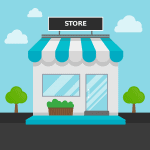Marketing
Marketers’ Guide to Maximize Email Personalization Strategy
Email personalization is a powerful marketing tool to help your company stand out in the inbox. It can boost engagement, improve your brand’s reputation, and drive sales. To maximize your email personalization strategy, you need to understand what you want it to achieve. This will give you the best idea of how it can help your business and what metrics to track.
Personalization
Personalized emails are a great way to reach out and engage with users. They make them feel like you know them and understand their needs. It also helps you build trust and make them more likely to buy from you.
Personalization can be anything from using their first name to writing their subject line with a specific message. It can be a lot of work, but it can make all the difference in your email marketing strategy.
Marketing professionals frequently use demographic and psychographic information to produce tailored emails that appeal to their prospects. Demographic data include gender, age, financial status, and more.
Psychographic data is less tangible but can include the prospect’s interests, opinions, dreams, and aspirations. It can help you find out what your options are really looking for and provide them with the right solutions to meet their needs.
Another effective method of personalization is dynamic content. This type of content can change based on your recipient’s preferences and even their behavior on your website.
For example, if a user is a frequent buyer of perishable goods, you can send them an email that recommends replenishing their stock with new items. This can help them save money while still buying the products they love most.
Ultimately, email personalization techniques are a must for any successful marketing campaign. They are a vital part of a well-rounded strategy and have the potential to significantly increase conversions, brand awareness, and revenue for your business.
Segmentation
Segmentation is grouping your audience into segments based on demographic, psychographic and behavioral criteria. It can help you send relevant emails to specific groups of your subscribers.
For example, you can segment your email list based on your subscribers’ business. You can send a specific email to real estate subscribers, another to restaurant owners and so on. This way, you can target each audience segment with a particular message and only send out a few pieces of content that might be too generic or unfocused. One of the most easiest and efficient ways to do this is to use a specialised email list hosting service to take care of much of the matter for you, and you can click here to learn more about how they do so.
In addition, you can use geographic segmentation to target specific areas of the country with special offers or deals. This can be a very effective way to increase revenue, as it allows you to tailor your strategies to local markets and make a more significant impact with fewer resources.
If you haven’t used segmentation before, here are some things to consider:
First, decide what criteria you’re going to use for your segments. Generally, you’ll need a few critical pieces of data from your subscribers to start with, such as their names and contact information.
Depending on your software, you can add questions to your signup form to ask for this additional information. It’s worth monitoring your subscriber rates to see if adding this extra information has caused a drop in your overall numbers.
Automation
Automation is a powerful tool for creating personalized emails. It saves your team time and reduces the chance of human error. It also helps increase the relevance of your messaging.
Marketers need access to specific personal data about their prospects and customers to achieve this. Luckily, billions of data points are available today from social media and Google.
However, most brands still need to take advantage of these resources. This can negatively affect their reputation, engagement rates, and even revenue.
Email automation helps improve customer relationships by sending personalized messages at the right time. It also eliminates repetitive tasks. For example, if a new user adds a product to their cart but leaves without buying it, you can use an automated workflow to send them a reminder about the abandoned order.
This way, they can complete their purchase and earn a return on investment. It’s a powerful strategy that helps retailers recover lost sales and boost their ROI.
More people are likely to open and click on personalized emails than generic ones. They’re also more engaging and evoke more trust in your audience. Marketers must incorporate this into their strategies to take advantage of tremendous opportunities to increase sales and drive customer loyalty.
Interactivity
Interactivity is the ability to interact with digital content or devices. It is what makes it possible to navigate websites, social media, or play video games. It also allows computers to communicate with each other, allowing them to respond to a user’s actions.
In marketing, creating engaging, interactive email content is essential. This will encourage customers to engage with your brand and convert to paying customers.
Interactive email content consists of various elements, including polls, surveys, and puzzles. These elements make users feel like they’re actively participating in the content of the email and can increase their open rates and engagements.
A survey by Zembula found that interactive content is more effective in driving email conversions than images and video. In fact, 69% of respondents prefer interactive content over static emails, with GIFs and videos rated as even more engaging than images.
Using interactivity in your email will also boost open rates by ensuring that your messages are relevant to the recipient. When your email content is timely, you’ll have a higher chance of making a positive impression on the recipient and converting them to paying customers.
Marketers can leverage this technique by creating a personalized campaign tailored to the audience’s interests, pain points, and preferences. These emails are then sent to the right people at the right time. This can lead to a 139% increase in click-through rates over static one-time sends and will also help you improve your email deliverability.
Related Posts












